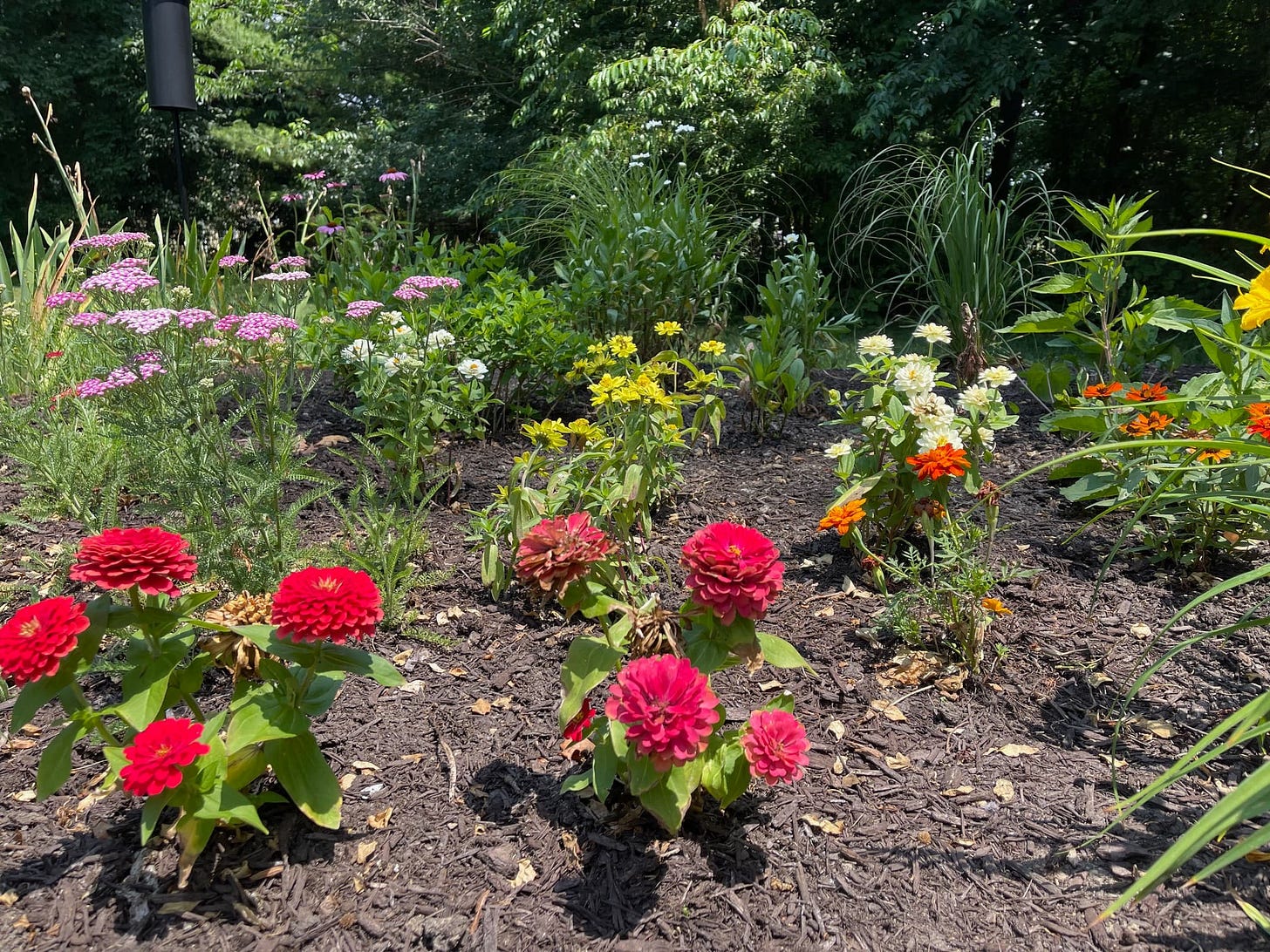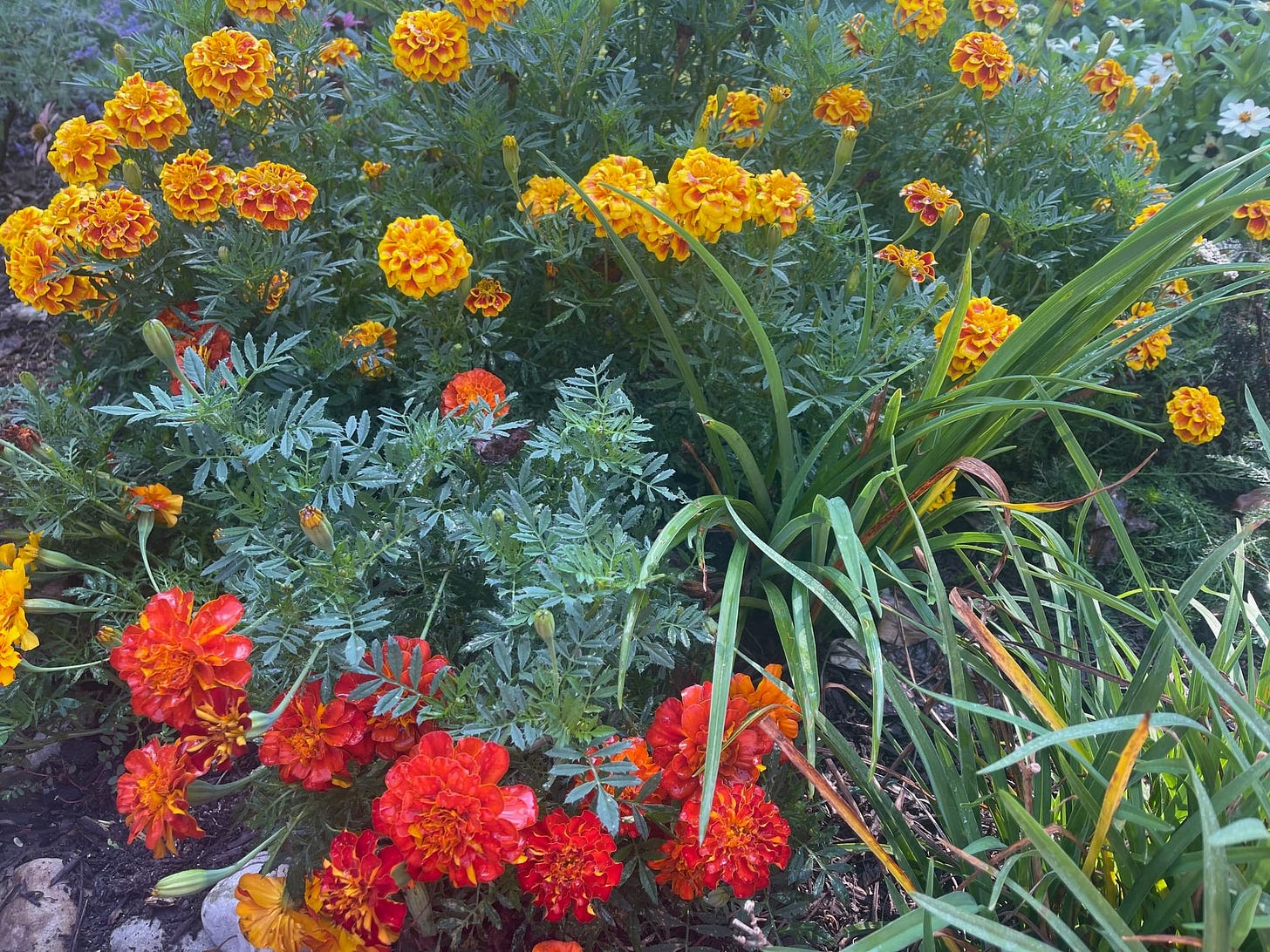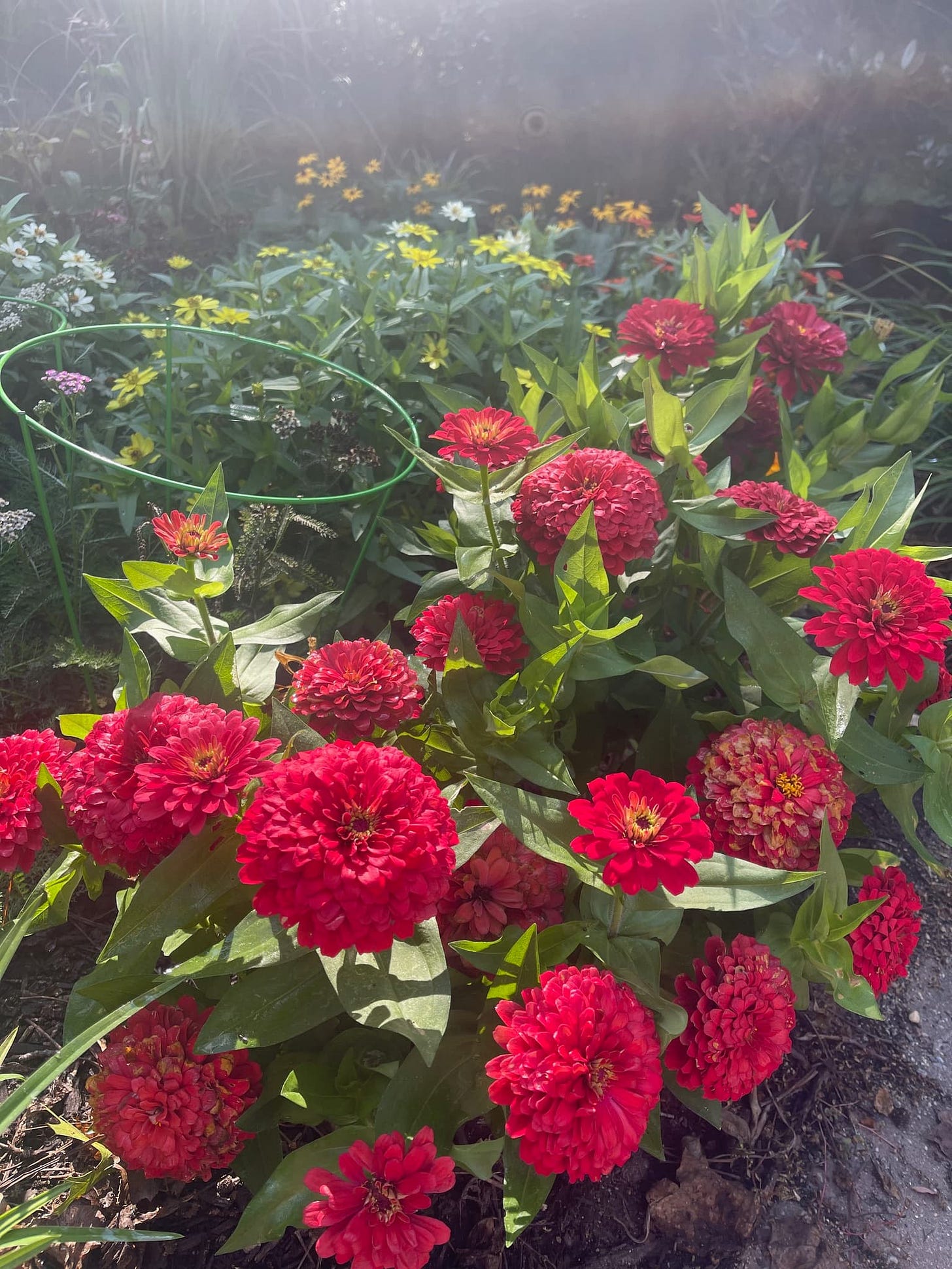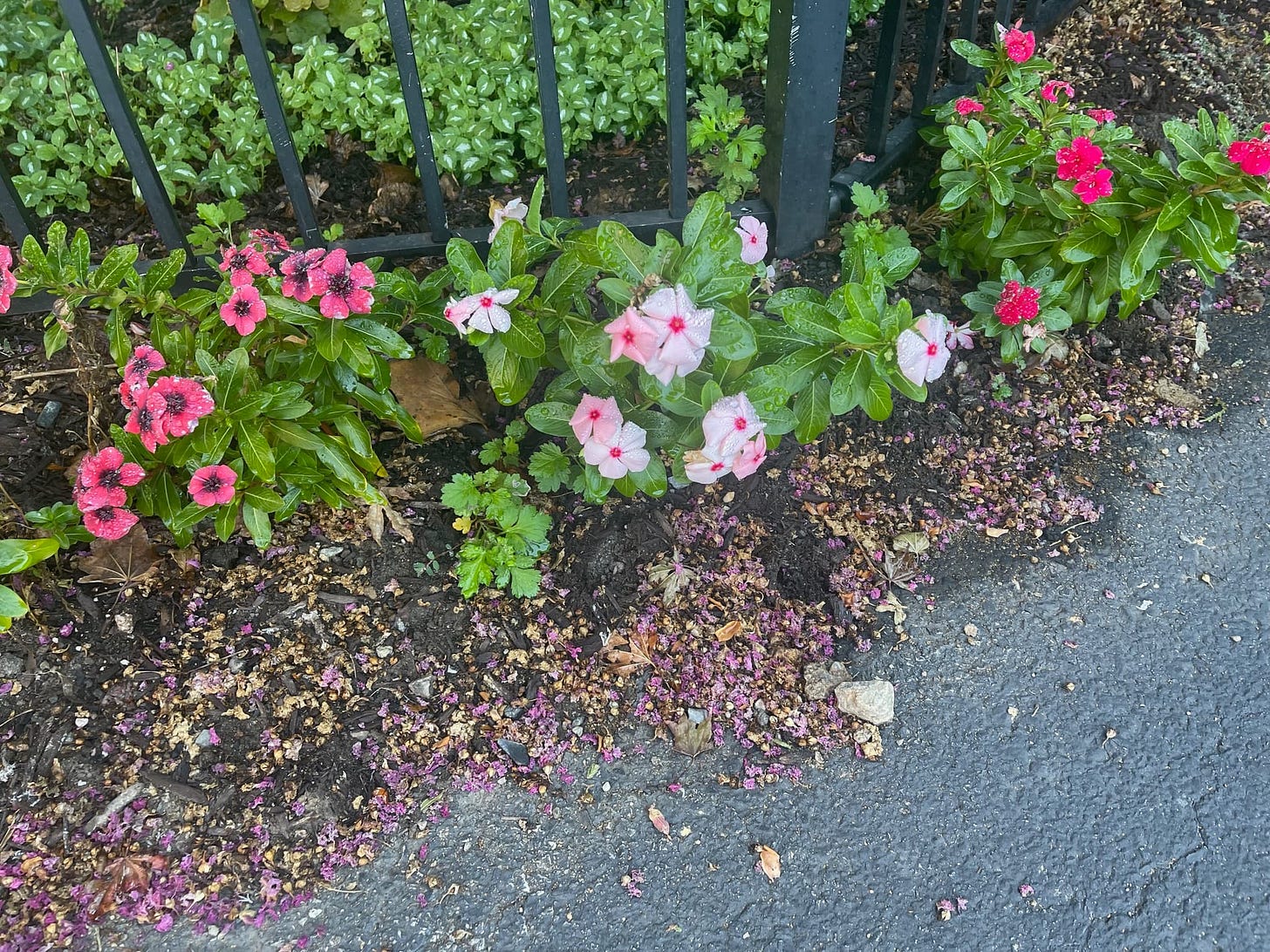I Love Annuals
There. I said it. Well, I wrote it. Just something else that I never thought would happen. Me. In love with annuals. As you may know, annuals are plants that live for one year. That’s all they got. The next season you have to plant them (buy them) again if you want the same kind of flowers. Longtime readers will know that I have not had a high opinion of annuals. To put it bluntly, I always thought they were for beginners. If you aspire to be a serious gardener, you enter the world of perennial gardening, where study, expertise, skill, and artistry combine to create true art in your garden. Oh yeah, you can grow vegetables and fruit and stuff too, if you absolutely need to. And you presumably buy perennial plants once and have them forever and ever, possibly because you are cheap.
Annuals? Annuals are purchased at Lowes or Home Depot in rows of hanging containers that are meant to decorate your porch. I never thought it took a lot of expertise to buy these ready-made miniature gardens that predictably include some creeping jenny hanging over one side of the pot and some spikey-leafed plants in the middle. If you don’t buy annuals in hanging containers, you can buy them in trays that hold row after row of tiny plants for the low, low price of $3 to $4 each, more or less. I always thought that a flower that can be planted with a hand trowel, as opposed to a garden shovel, shouldn’t be taken seriously. If you drive around your neighborhood, you are likely to see rows of these soldiers planted by a local landscape company on street corners and under and around street signs, where the life expectancy of this display of uniformity is about one or two months, give or take, before the landscape company replaces the plants with another, different, battalion of annuals, ready to give their all before they, too, will be replaced by the next seasonal array of troops.
But, over the past two years, as I’ve talked about gardening with experts who have an extraordinary knowledge of garden design, annuals kept coming up in the conversation. They often said they would use annuals to create an unexpected burst of color in their perennial garden. As someone who is always complaining about the lack of color in my shade garden, their comments would grab my attention. Additionally, my neighbor, Patty, has a box garden on her porch full of zinnias, which are staggeringly beautiful, and it’s impossible to look at them without being jealous. It caught my attention when Patty would talk about how the plants would reseed themselves each year and grow back in much the same way as perennials. I thought, if the plants act like perennials, who cares if they aren’t real perennials? Who would know?

And so it was that this spring I decided to fill in the empty space between the immature perennial plants in my sun bed with annuals. Other than zinnias and vincas, I had no idea what kind of annual plants to buy, so I relied on my tried-and-true method: buying the cheapest plants I could find. One day I found myself cruising the aisles of a nursery I hadn’t visited previously, called Sun’s Garden and Landscaping, in Ashton, Md. They seem to be a relatively small establishment to the left on Route 108 as you drive west from my house in Ellicott City towards Olney. What immediately caught my attention were the rows and rows of annuals selling for $3.50 each. To my untrained eye, the plants seemed very robust and healthy. I loaded up the car with a dozen marigold and zinnia plants and proceeded to plant them in front of the sun bed, thinking that I had taller perennial plants that would be the stars of the bed, and the annuals would be a nice, colorful, pain-free addition to the mix. The annuals, along with some daylilies and yarrow, held the fort in front of the bed. Panicle hydrangea, moonbeam coreopsis, coneflowers, and black-eyed Susans inhabited the middle of the bed. Russian sage, iris, the bird feeder, and ornamental grasses added the height to the rear of the bed.

I honestly didn’t expect that the annuals would be the star of the bed in such a short period of time, but that’s exactly what happened. With no fuss or hassle, they exploded with blooms, filling the bed with brilliant colors. They are so robust that they are now crowding out the yarrow and the daylilies, which is fine because both of those perennials need another season to establish themselves. The marigolds and zinnias are providing a bridge to next season.

I’ve fallen in love with these plants, and I don’t care if the world knows it. The dirty little secret is … annuals are fun! You can instantly fill a bed with almost any color you like. Given the correct amount of water and sunlight, they are easy to grow, and they seem to bloom all season long. Notably, they don’t require a lot of thought in terms of landscape architecture, which is totally different than my approach to perennial gardening, where I typically agonize over plant selection and garden design for obscenely long periods of time. You can find some annuals that look pretty, stick them in the ground, and enjoy. What the heck, they’ll be gone by next season anyway.
I’m wondering what kind of maintenance is required for them as we head into fall. They are, after all, annuals, so I won’t be seeing the same plants again next year. But there is this self-seeding business with the zinnias and the marigolds, and my suspicion is that if I do nothing the flowers are going to drop their seeds and I will have even more annuals in the bed next year. If this self-seeding miracle does occur with the zinnias and marigolds, I will have too many plants for the sun bed and will have to find other places in the garden for the new flowers. I don’t have a lot of sunny spaces, but this all seems like a good problem to have as I look forward to next spring.

In the meantime, Linda and I planted some additional annuals in the narrow bed in front of the fence bordering our driveway. We purchased vinca that are doing great, and some other annuals that unfortunately are no longer with us. The space gets speckled shade in the morning and then strong afternoon sun. The vinca have thrived in this bed, and once again I find myself admiring the colors while I’m out on Morning Patrol. (Note: Linda grows gorgeous pots full of annuals every year. I just haven’t paid attention. Shocking, I know.)
Next year I will be looking for new opportunities to use annuals to brighten up the garden. There are some spots that get at least speckled sun, and I could see even more zinnias, marigolds, vinca, and who knows what other annual plants, in my future. But for most of the garden, the annual of choice that does great in shady areas? The incredibly ironically named -- for a Type A Gardener, that is -- impatiens. Of course.
I hope you’ve enjoyed my story about adding annual plants to my perennial garden. I’m not sure what I’ll be writing about next week, but the garden always seems to come up with a story to tell. As always, you get to read this weekly content for free and can share it with friends, family, and others by clicking on the SHARE button in the text or by sending them a direct link to the newsletter at kensolow.substack.com. You can find the previous newsletters (45 of them) in the archives. Thanks so much for reading, and thank you for your comments and your likes.



